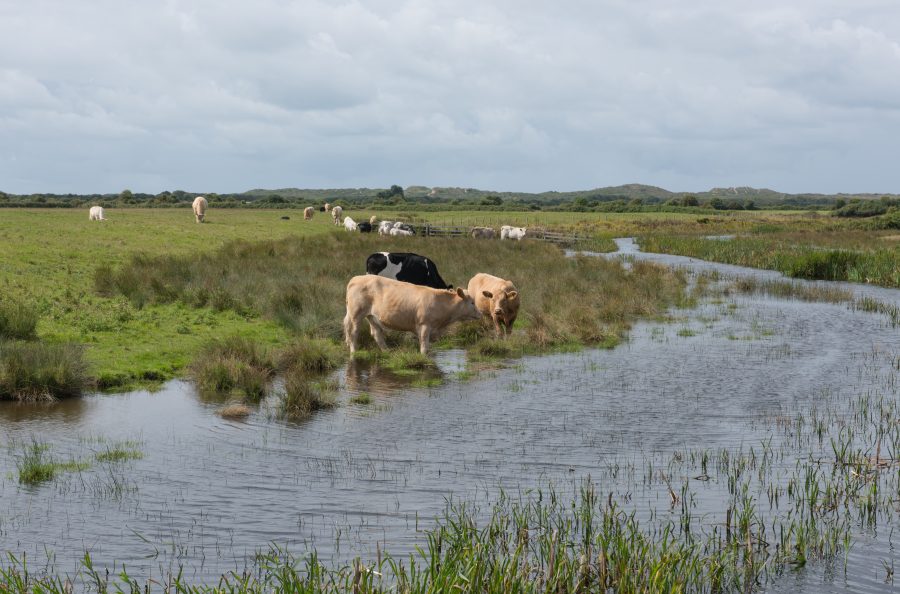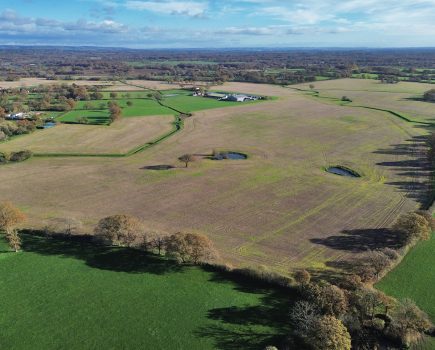By Bethany Thomas and Helen Clouting MRICS FAAV, Batcheller Monkhouse
Since the start of the year, there have been several announcements concerning the Environmental Land Management schemes, with the Oxford Farming Conference used as a platform to communicate these updates.
Following this, DEFRA has increased the payment rates for many Countryside Stewardship (CS) higher-tier and mid-tier actions, specifically those which focus on creating or conserving distinct habitats. The most notable payment rate increases include AB10 unharvested cereal headland (£1,072 per ha), AB5 nesting plots for lapwing (£765 per ha), GS13 management of grassland for target features (£528 per ha), GS15 haymaking supplement (£157 per ha) and GS6 management of species rich grassland (£646 per ha).
Small and large scale farms with low input grass meadows have benefitted from CS options such as GS6 and GS15. Farmers have adopted various methods of increasing their species rich grassland through bale grazing, delaying their hay cuts and even using sheep to tread in the wildflower seed. Before applying for these higher tier options, Natural England’s support is crucial.
Farmers and landowners looking at the species-rich options need to be aware that the Rural Payments Agency is likely to request that field parcels be resurveyed if they have not been reviewed in the past five years. As payment rates increase for various CS and Sustainable Farming Incentive (SFI) options, this will inevitably lead to increased farm audits to ensure agreement holders satisfy the option requirements. We have already seen an increase in spot checks for CS agreements. It is reassuring to hear, however, that a more pragmatic approach has been promised, with less emphasis on applying fines and penalties.
Turning to CS capital item grants, the extension from two-year to three-year agreements to complete capital works has been welcomed. Another shake up is that businesses could have multiple agreements running concurrently. This can allow capital works to be staggered over a more realistic timeframe, which can be useful for cashflow purposes and project management. The opportunity to have more than one agreement per business should be taken.
It is prudent to seek advice from the local catchment sensitive farming officer (CSFO). While for certain CS items their support is necessary, they are also able to advise on matters that otherwise may not have been given consideration, but with the offer of funding may be of interest. These can include rainwater harvesting items, for example.
With the rule changes surrounding cross compliance, catchment sensitive items are worth taking time to consider while the grant funding incentive is still available. The future approach to enforcing compliance measures remains unclear, but safeguarding water quality is unquestionably going to remain a priority and so items which can support this now should not be overlooked.
Another update is the option to transfer from an existing Environmental Stewardship (ES) or CS agreement, across to SFI. We have noticed a particular rise in interest in transferring from ES following the latest payment rate increases.
The announcement that SFI and mid-tier CS will be a combined scheme moving forwards is promising. This will mean that options can be selected under both schemes, to achieve a more tailored agreement. This should encourage agreements that offer greater environmental benefits which integrate with the farm business. This is worth serious consideration. Where an existing agreement is too complex, the new options might be more financially attractive or complement the land management to a greater extent.
The option to amend SFI agreements annually on the anniversary date allows applicants to add new field parcels, look for different options and increase the areas of existing options. This gives farmers greater flexibility to start small initially and enter only what they can realistically manage.
All SFI and CS agreement holders must keep appropriate records and photographs to ensure they meet the management requirements. These can include cropping and grazing records and soil testing results. We emphasise the importance of keeping these records and are willing to advise and provide support on this. Our advice would be to ensure your existing agreement is working for you. If not, now is the time to explore these new revenue options.







